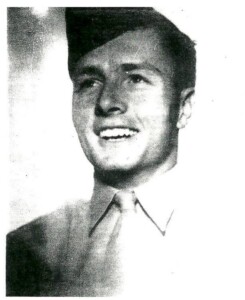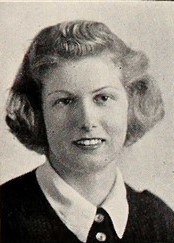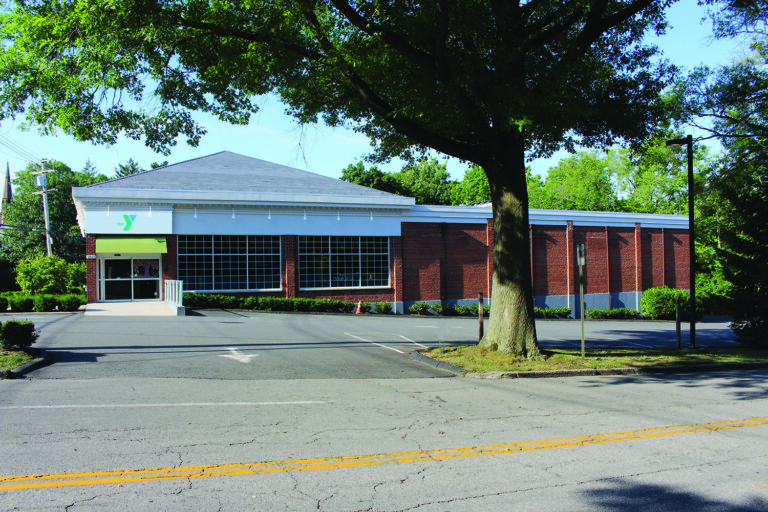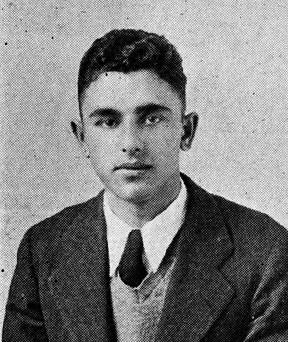Honoring Service: Fallen Veteran Thomas M. Black, World War II
Our reporting on local veterans is a collaboration with RyeVets.org to highlight those from Rye who have served our country across times of war and peace. There are over 2,100 veterans from the City of Rye. Learn more about how you can help research and write biographies of those that have served.

Thomas M. Black was born November 11, 1925 in Davenport, Iowa. He was the middle child of nine and the third of six boys. The family relocated to Rye in 1928. He was a communicant of the Church of the Resurrection and had graduated from Resurrection School and Rye High School class of 1943. The family lived at 369 Midland Ave. He enlisted in U.S. Marine Corps during World War II.
Date of Birth: 1925
Died On: 3/3/1945
Street Address: 369 Midland Ave
Service Number: 925334
Branch of Service: U.S. Marine Corps – 3rd Marines, 3rd Marine Division
Thomas enlisted in the U. S. Marines in July, 1943. He received training with the 28th Replacement Draft before joining the Third Marine Division on Guam in January, 1945. The 28Th Replacement Draft, 3rd Marine Division, was formed at Camp Pendleton in Nov. 44 and sailed on the USS Rochambeau from San Diego on 11/12/44 to San Francisco to form a convoy and left on 11/16 arriving at Pearl Harbor 11/23 Thanksgiving Day. They left there on 11/26 and arrived Eniwetok Island 12/4/44. Sailed for Guam on 12/23, and arrived 12/27 and assigned to the 3rd Marines, 3rd Marine Division. They had a tent camp near the village of Yona, and spent the next 6 1/2 weeks there training for Iwo Jima but didnt know that .
The replacements practiced unloading landing craft, hiking, etc, and on 2/8/45 Thomas and fellow Marines hiked with full packs and rifles across Guam, about 7 miles, to Apra Harbor and boarded ship. They didnt sail until 2/17, two days before the invasion because they were to be reserve troops only, and werent scheduled for combat Thomass ship remained about 80 miles off Iwo, but after 3 days, causalities were so severe, they were being sent ashore in groups. Unhappily most of the replacement men had only brief training in combat and many were killed or wounded. The 28th Draft men were all ashore and fighting or serving as beach unloaders by 2/28, and integrated into various units.
Iwo Jima -The Situation D+11: 2 March 1945 “Oh God, not another Ridge”.
On the right flank, the 25th Marines kept up pressure on both the Turkey Knob and Hill 382. The 1st Battalion attempted pre-dawn infiltrations but they were driven back by mortar and machine gun fire. A number of Sherman tanks and flamethrower tanks nicknamed Zippos moved up in support and pounded the blockhouse at the top of the Turkey Knob but the Japanese simply retired to the depths of their tunnels to wait out the barrage. The 26th Marines, after some intense fighting, managed to secure a foothold on Hill 382 2nd Battalion after a three-pronged attack following a short but sharp artillery barrage. In many instances artillery could not be used due to the closeness of the combatants and the Marines had to use small arms, explosives, grenades and flamethrowers to pry the Japanese out of their positions.
In the center, the hopes of the 3rd Marine Division of making a rapid dash to the sea were rapidly fading in the face of determined Japanese resistance. The division had still to take Hills 362B and C but pressed forward towards the unfinished Airfield No. 3 and the base of Hill 362B with the support of tanks. The open ground of the airfield gave virtually no cover from the Japanese artillery and the 9th Marines came up against the defenses of Baron Nishis command and progress remained slow.
On the left flank, the 5th Marine Division were encountering fewer and fewer man made obstacles as the ground became rougher and there were plenty of ravines, canyons, valleys and draws so that this natural defensive cover was all the Japanese needed. Nishi Ridge lay some 200 yds beyond Hill 362A and the 5th Engineers had to come forward and fill an antitank ditch in order for the attack to proceed. The 26th and 28th Marines then had the task of clearing the remainder of Hill 362A, after which they advanced to the base of Nishi Ridge.
Thomas M. Black was wounded on March 2, and died of his wounds on 3/3/1945 and was buried on the island of Iwo Jima in the 5th Marine Division Cemetery.
The Third Marine Division incurred 1,131 killed in action and 4,438 wounded during its invasion and combat on the island of Iwo Jima from February 20, 1945 to March 16, 1945. The Battle of Iwo Jima has become etched in the historical memory of Americans largely because of the iconic photograph taken by photographer Joe Rosenthal. The photo derives power from more than its stunning visual image. It conveys the struggle and ultimate victory of U. S. Marines who played a critical role in bringing the catastrophic destruction of World War II to an end less than six months later. This battle came at an extraordinary cost to the United States; nearly seven thousand dead, almost six thousand of which were Marines. Iwo Jima remains the costliest battle in the history of the U. S. Marine Corps and represented approximately one third of the entire Marine death toll during World War II.
American Admiral Chester Nimitz reflected on the incredible sacrifice of the Marines who fought at Iwo Jima by saying, “Uncommon valor was a common virtue”.






